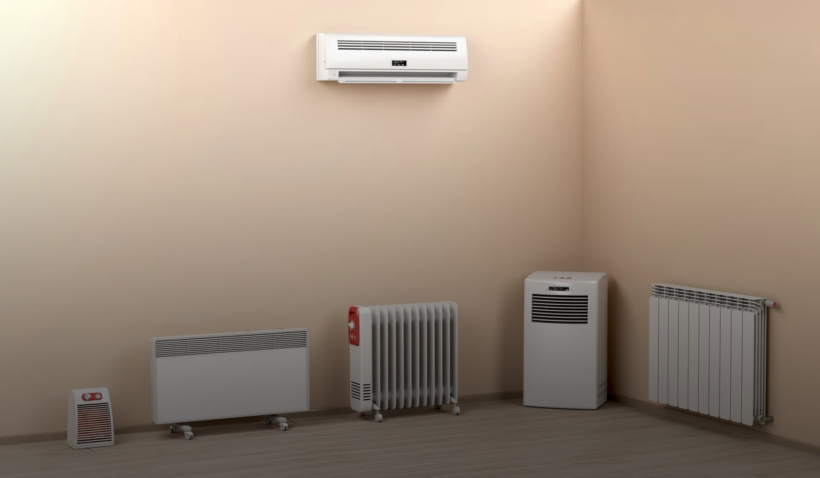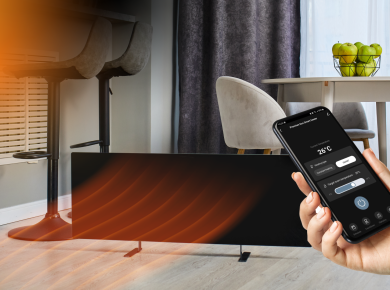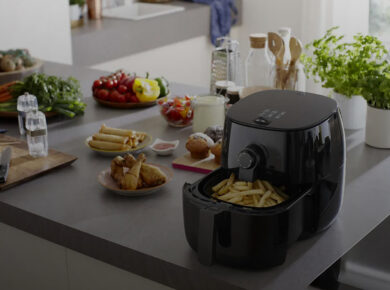The choice and purchase of a quality home heater should be taken seriously. If you are not looking for an instant solution that will inflate your electricity bills, but an energy efficient option that will reliably serve as an additional source of heat in the house in winter, you better think about it in advance.
Perhaps the most convenient and obvious solution when picking an additional device for warmth in a living room or office is an electric model. This does not need any constructive changes – just a power source is enough. But which electric model to choose from the many varieties? Catch a handy guide about what types of electric heaters are and keep them in mind!
What variations of electric heaters are there?
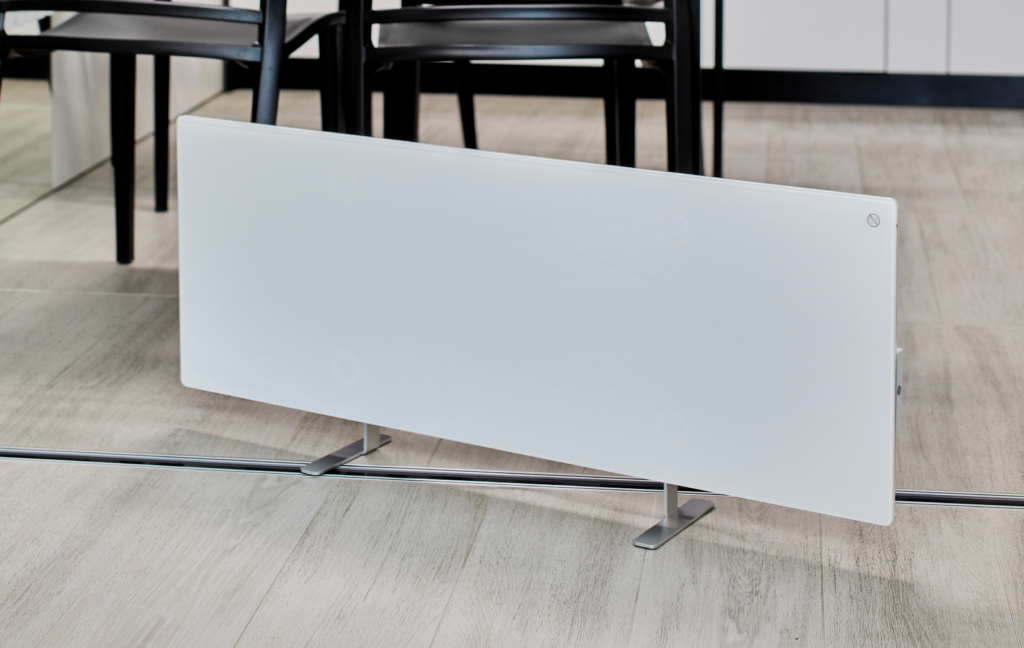
Household appliances for heating are divided into different types of heat for homes according to various criteria: heating technology, installation mode, purpose of use. Let’s look at all possible electric heating options for home by characteristics:
- Heating technology
The most common classification is divided into types according to the methods and technologies of heat spread:
Air heating: all models of fan heaters can be attributed to such devices.
Convection: this type of transmission is used in oil and convection radiators.
IR-Radiation: this heating technology is typical for infrared models, which can be produced in the form of lamps or ultra-thin panels.
Combination of convection and IR-radiation: newer generations of heating devices employ this method of heat transmission, which involves heating things in room via radiation, which then emits warmth into the air, which naturally transports the heat.
- Installation methods
All types of heaters, regardless of the method of heating, can have different installation methods and be floor, wall, table and ceiling. Among them, portable easy-to-move models or permanently fixed ones can be found.

- Specifics of use
The place where the device will be used is very important: its purpose and area. An infrared model with directional heat or a fan heater is suitable for open space in offices, as an additional electric heat for house or a city apartment with central heating system – a model of an infrared panel made of glass or ceramics, and for a country house a mix of several units may be required at once.
Different types of electric models
by heating technology
The most significant feature on which the types of heaters differ is the warmthing technology. Let’s talk about it in more detail!
Fan heater
A fan heater is the simplest and cheapest type of heating device. The model essentially combines a heating element and a fan placed in a plastic or metal case. A stream of air is produced by the fan, and as it passes past the heating components, it is heated and spread evenly throughout the space. This is a lightweight and compact device that quickly distributes warm air throughout the room. But the power of this model may not be enough to heat a large room, it is better to use it in addition to another heater or if you need to heat a small space. This device burns air and its operation may be accompanied by an unpleasant smell of burning. This happens when household dust comes into contact with a heating element that is not closed in any way.
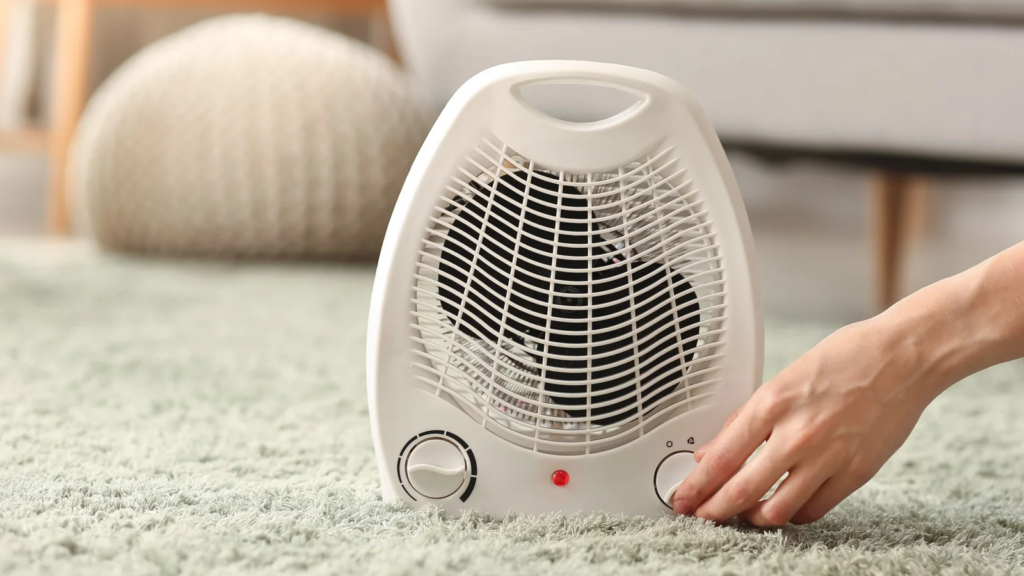
Fan heaters are divided into two large groups according to the type of electric heating element, it can be a spiral or ceramic plates. Ceramic fan heaters are more convenient and safe, they are distinguished by a relatively low temperature of the working element, which prevents too active “burning” of oxygen and increases their service life.
Oil heater
An oil heater in appearance and principle of operation is similar to a central heating battery, only inside there is not water, but oil and an electric element heating it. The oil heats up the radiator housing, and then the surrounding air. There is no exposed heating element on the radiator, so nothing bad will happen if a newspaper or a blanket falls on it. The oil cooler does not burn oxygen, so it can be used for a long time in a room where people are. Advanced oil radiators are equipped with thermostats that allow you to adjust the intensity of heating and prevent overheating of the device, some models have programmable timers, LCD indicators. It should be kept in mind that an oil radiator is not the most mobile device, and it may be challenging to move it from one room to another or store it for the summer.
Convection heaters
Its operation is based on the convection principle, and heat is dispersed as a result of air mass movement. The convector’s body is made to allow cold air to enter through its bottom holes, come into contact with the heating element, and then be heated before leaving through the top ports. The space heats up rapidly and uniformly because warm air is moved in a targeted way. Heating the room with the help of a convector takes only a few minutes, and using the thermostat built into the convector, you can accurately select the desired temperature level, which will be maintained constantly, during the entire time the convector is running. As a rule, an electric convector is a fairly light wall-mounted model, it differs from a traditional oil heater in a shape that fits more into the interior, and not too massive dimensions. It can be installed both on the floor and on any vertical surface of the room: the mounting frame is hung with screws, and the convector is put on it.
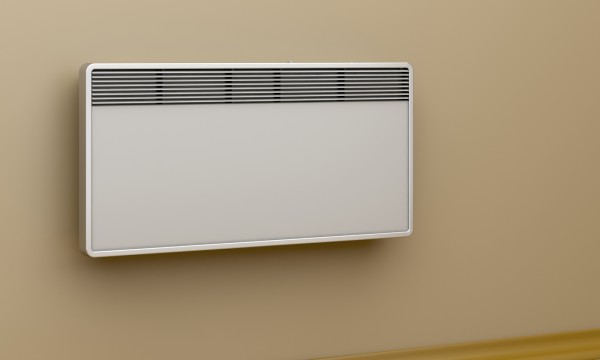
Infrared Heaters
In a classic infrared model, special lamps are used as a heating element, burning in a spectrum unobservable from human eyes and emitting a large amount of heat. Infrared models often require professional installation, usually fixed to walls or ceilings. When properly installed, they can save up to 70% on electricity (and therefore money on your electricity bill) compared to other types of heaters in homes.
An infrared heater does not actually heat the space around, but the things it is directed at. It radiates heat energy (like the sun), which is absorbed by the surrounding surfaces (floor, walls, furniture, etc.). Thermal radiation, like ordinary light, is not absorbed by the air, so all the energy from the infrared model reaches the heated surfaces and people without loss. At the same time, the average temperature in the room can be even 2-3 degrees below the optimum, but due to the direct absorption of energy from the infrared model, a person in the area of heater’s action will feel comfortable.
Modern models are often created in the form of ceramic or tempered glass infrared panels, which makes them the most suitable for residential interiors.
Micathermic Heaters
This is a heating device of the latest generation. It functions on the basis of a mixture of infrared waves (80%) and convection (up to 20%). The primary heating is accomplished by being exposed to infrared rays, which heat surfaces around, including walls.

The main advantage of micathermic models is the low temperature of the body heating. Thanks to this, families with small children can safely use the device without fear for their safety.
The device consists of a plate having a shell of mica, inside of which there is a heating element. Mica is a natural material with characteristic properties due to which the mineral is used as a first-class thermal and electrical insulating material. Mica is often used in many electrical appliances as an electrical insulator.
In a micathermic model, the mica completely covers the panel. Due to this, the temperature of the body of the heating equipment does not overheat, and even if you accidentally touch a working device, it is almost impossible to get a burn or electric shock.
Red Dot winning solution
for your optimal choice
What is the best type of electric heater? Pay attention to the jury ratings, reviews and heating technology awards received over the past season to choose the most modern model.

You can get acquainted with the advanced super-economical AENO Premium Eco Smart heater, which has twice won the Red Dot for product design. It combines infrared and convection heating technology with remote control and energy tracking through a mobile app. Works without noise and dust, absolutely safe for allergy sufferers. The device is equipped with drop and overheat sensors and will simply turn off in the event of an incident. Get comfortable and gentle heating at home and save on your electricity bills!
Important to remember! Each type has its own recommended room volume for full heating, as well as typical electricity consumption depending on the power. The higher the wattage, the larger the area of the room that a given model can heat.
Convection radiators usually have an energy consumption of 750 W, 1000 W, 1500 W, 2000 W and maybe more because air heating requires a lot of energy. For fan heaters, the consumption is 1500-2000 W per hour, they are also inefficient. For oil, the energy consumption limits are also from 1000 to 2000 W per hour, but despite the fact that the oil heats up slowly, they slowly release heat, which has a positive effect on the level of efficiency. The highest efficiency is in infrared models, because they do not lose heat by warming empty air – but directly objects, so their energy consumption is not more than 500 W per hour.
Disclaimer! These are only approximate information and it is necessary to clarify the power of each model, different models of the same type of heating may have different power consumption.
Want to BUY this product?
Check out retailer list for your country.
